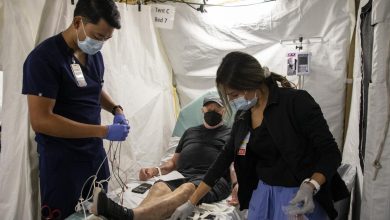Monica Seles’ Myasthenia Gravis Journey: What Fans Need to Know

Introduction: A Champion’s Silent Battle
Monica Seles is remembered as one of the fiercest competitors in tennis history. A nine-time Grand Slam champion, she inspired millions with her grit, passion, and unmistakable two-handed strokes that changed the women’s game forever.
But behind the trophies, the applause, and the global fame, Monica faced battles far beyond the tennis court. In recent years, she opened up about being diagnosed with Myasthenia Gravis (MG)—a rare autoimmune disease that affects the way muscles function.
For fans who grew up idolizing her strength, hearing this revelation was heartbreaking. But Seles, true to her resilient spirit, has turned her illness into a story of courage, awareness, and hope.
This article dives deep into Monica Seles’ Myasthenia Gravis journey—what fans need to know, how she copes with the disease, and the lessons we can all learn from her fight.
1. Who Is Monica Seles? A Reminder of Her Glory Days
Before exploring her health journey, it’s important to remember who Monica Seles is and why she remains such a beloved figure in tennis and beyond.
- Grand Slam Legend: Seles won her first Grand Slam title at just 16 years old and went on to claim nine major titles in her career.
- Fearless Competitor: Known for her powerful baseline game and mental toughness, she became the world No. 1 and dominated women’s tennis in the early 1990s.
- Overcoming Trauma: In 1993, tragedy struck when she was stabbed on court by a deranged fan. Though she survived, the attack deeply impacted her career and emotional well-being.
- Inspiration: Despite setbacks, Monica returned to tennis, proving her strength not only as an athlete but as a human being who never gave up.
Her journey with Myasthenia Gravis is yet another chapter in her extraordinary story.
2. What Is Myasthenia Gravis?
Myasthenia Gravis (MG) is a chronic autoimmune neuromuscular disease that causes weakness in the body’s voluntary muscles.
- How it Works: The immune system mistakenly attacks the communication between nerves and muscles, leading to muscle fatigue and weakness.
- Common Symptoms: Drooping eyelids, difficulty swallowing, blurred vision, muscle weakness in the arms and legs, and severe fatigue.
- Daily Struggles: For athletes like Seles, whose careers depended on physical strength, this diagnosis can feel devastating.
Understanding MG helps fans appreciate the challenges Monica faces and why her openness about it is so significant.
3. Monica’s First Signs of Trouble
Seles has described how she began noticing subtle changes in her body—weakness, unusual fatigue, and difficulty maintaining the energy she once had.
What might seem like normal tiredness to most people felt different for Monica. As a former elite athlete, she knew her body better than anyone. Something was off.
Eventually, after a series of tests and consultations, she received the diagnosis: Myasthenia Gravis.
For Monica, it wasn’t just a medical label. It was a new reality that threatened her independence, her identity, and her sense of control.
Related Article: Exploring Effective Treatment Options for Myasthenia Gravis
4. The Emotional Weight of the Diagnosis
Getting diagnosed with a rare autoimmune disease isn’t just a medical event—it’s an emotional earthquake.
Monica has spoken about the fear, confusion, and isolation she felt when she first learned about MG. Questions filled her mind:
- Will I ever feel like myself again?
- How will this affect my everyday life?
- Will fans see me as weak instead of strong?
For someone whose career was built on resilience and physical power, the diagnosis carried an extra layer of heartbreak. But it also opened the door for Monica to show another kind of strength—vulnerability and courage in the face of uncertainty.
5. Living with Myasthenia Gravis: Monica’s New Normal
Life with MG means constant adjustments. Unlike tennis, where Monica could train harder to improve, MG is unpredictable. Some days are better, some are worse.
She has shared that even simple activities—reading, walking, or lifting objects—can feel exhausting. It’s a daily battle, but one she faces with the same discipline and determination that made her a champion.
Related Article: The Ultimate Guide to Foods to Avoid with Myasthenia Gravis
Lifestyle changes Monica embraces include:
- Prioritizing rest and managing fatigue
- Following medical treatments and therapies
- Staying emotionally connected with loved ones
- Raising awareness about MG to help others feel less alone
6. From Tennis Icon to Health Advocate
Instead of retreating from the spotlight, Monica has used her platform to educate others about Myasthenia Gravis.
She knows that as a global sports icon, her story carries weight. Fans who once cheered for her tennis victories now cheer for her courage in speaking openly about her health struggles.
Her advocacy has sparked conversations about:
- Invisible illnesses – Diseases that can’t always be seen but deeply impact lives.
- The importance of early diagnosis – Many MG patients suffer for years without proper treatment.
- Breaking stigma – Showing that even strong, successful individuals can face chronic illness.
7. Fans’ Emotional Response
When Monica revealed her diagnosis, fans around the world were heartbroken but also deeply moved. Social media filled with messages like:
- “Monica, you inspired me on the court, and now you inspire me even more off it.”
- “As someone living with MG, I finally feel seen because of you.”
For fans, Monica’s honesty transformed her from a sports legend into a symbol of human resilience. Her story has given hope to countless people fighting their own invisible battles.
8. The Broader Significance: Athletes and Chronic Illness
Monica’s journey also raises important questions about athletes and chronic illness:
- How do sports stars navigate life when their careers end due to health struggles?
- How can society better support athletes after their retirement, especially when illness strikes?
- Can public figures like Monica shift awareness toward underfunded and misunderstood diseases?
Her story is a reminder that athletes are human too—vulnerable to the same illnesses as everyone else.
9. Lessons from Monica Seles’ Journey
There are powerful lessons we can all learn from Monica’s experience with Myasthenia Gravis:
- Health is everything – Even champions are powerless without it.
- Strength takes many forms – Vulnerability can be just as powerful as physical endurance.
- Awareness saves lives – Sharing her story may help others recognize symptoms early.
- Community matters – No one should face chronic illness alone.
10. Hope for the Future
While MG currently has no cure, treatments exist to help manage symptoms. Research continues, and with greater awareness—fueled by voices like Monica’s—progress is being made.
Monica herself remains hopeful, using her platform to push for more research and better support systems for patients. Her story doesn’t end with the diagnosis—it continues as a beacon of resilience and advocacy.
Conclusion: More Than a Tennis Champion
Monica Seles’ story has always been about more than tennis. From surviving a brutal on-court attack to winning Grand Slam titles, she has repeatedly shown the world what courage looks like.
Her Myasthenia Gravis journey is the latest chapter in that story. It’s not defined by weakness but by an unshakable will to fight, inspire, and raise awareness.
For fans, it’s a reminder that our heroes are not invincible—but sometimes, their greatest victories come not on the court, but in how they face life’s hardest battles.
As Monica continues her journey, one truth remains: she is, and always will be, a champion.




